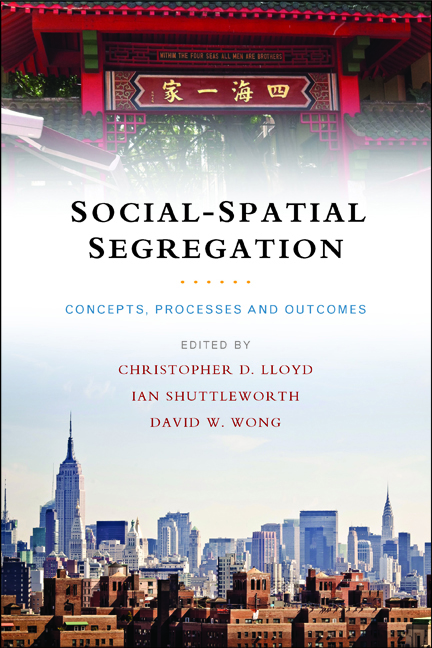one - Introduction
Published online by Cambridge University Press: 04 March 2022
Summary
Segregation is a key theme for academic research and is also of major policy and political interest (see, for example, Ouseley, 2005; Finney and Simpson, 2009). Questions often asked include what the segregation level is, whether segregation has increased or decreased and how, whether it is greater or less in one country or city than in another, and whether it is socially harmful. These questions are eminently sensible and are easy to ask, but their answers are not simple to provide despite the weight of academic research on segregation dating back to the 1950s, and earlier. These questions remain hard to answer (and may indeed always be problematic), because they involve method and interpretation, themes about which there is considerable discussion. In the UK context, for instance, there was much debate as to how far residential segregation had grown by the time of the 2001 Census, and about the mechanisms that underpinned changes in the distribution of populations (Simpson, 2004, 2005; Johnston et al, 2005; Carling, 2008). However, the academic community is probably nearer now to dealing with these and similar questions than it has ever been before. This book aims to show how and why this is the case by showcasing some recent international research on segregation that highlights how new methods and new data can offer fresh insights into the measurement of segregation and understandings of some of the mechanisms that lead to (or away from) segregation.
This volume's initial beginnings lay in conversations between the editors about global and local measures of residential segregation. These interchanges rapidly expanded to debates about how population is structured across space and how to deal most effectively with the complex and difficult phenomenon of spatial scale. As the discussions broadened out, and individual research agendas developed, attention also started to be given to the population processes that shape residential segregation and, following the growing academic and policy interest in neighbourhood research (van Ham et al, 2012), on some of the social outcomes of segregation across a variety of domains. It also seemed that segregation research was at an interesting juncture for several reasons that lay on the intersection between data and methods.
- Type
- Chapter
- Information
- Social-Spatial SegregationConcepts, Processes and Outcomes, pp. 1 - 10Publisher: Bristol University PressPrint publication year: 2014



